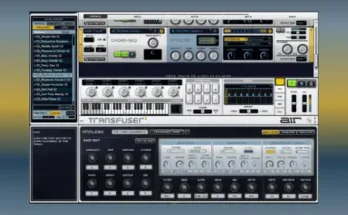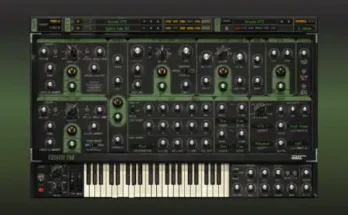Elka-X v1.0.5.85-R2R
Team R2R | 08 Oct 2022 | 8.8 MB
The Cherry Audio Elka-X synthesizer is based upon the legendary Synthex, a rare Italian analog synthesizer designed by Mario Maggi and manufactured by ELKA in the early eighties. Elka-X replicates the extraordinary character of the original synth without compromising sound or functionality, thoughtfully expanding its feature set and delivering the authentic Synthex experience at a price anyone can afford.
“If it had been built by a more prestigious manufacturer, and released at a more sensible price, the ELKA Synthex could possibly have rivaled the DX7 and kept analogue from being so swamped by digital.” – Peter Forrest (1998), The A-Z of Analogue Synthesisers, Part One
The Synthex included a combination of uncommon and forward-looking features that stood out from other contemporary synthesizers, including highly stable digitally-controlled analog oscillators and a flexible four-pole multimode filter. Unlike most other popular synths utilizing CEM3320 filter chips in a lowpass-only configuration, the Synthex filter featured a 24 dB/oct lowpass mode, 6 and 12 dB/oct bandpass modes, and a 12 dB/oct highpass mode. Along with a powerful onboard analog chorus effect, this gave the Synthex a distinct and powerful tonality. It was multitimbral, with the ability to play two separate patches simultaneously, in either split or layer mode. It even included an innovative four-track sequencer with real-time recording and transposition.
As ELKA’s primary market was home organs, they never gained a strong foothold in the professional synthesizer market. Sadly, the whirlwind of excitement generated by the 1983 release of Yamaha’s DX digital synthesizers relegated this superb instrument to the sidelines, never to achieve the success it deserved.
By the mid-80s, ELKA made the last Synthex for Stevie Wonder, who used it for the distinctive bass tone on his single “Skeletons” from the 1987 album Characters. Other notable users of the Synthex included Geoff Downes of the supergroup Asia, Keith Emerson, Nick Rhodes of Duran Duran, Peter Howell of the BBC Radiophonic Workshop, and Jean-Michel Jarre, who used it extensively on Rendezvous and for his famed “laser harp” sound.
Please REPORT in Comment Broken Links




